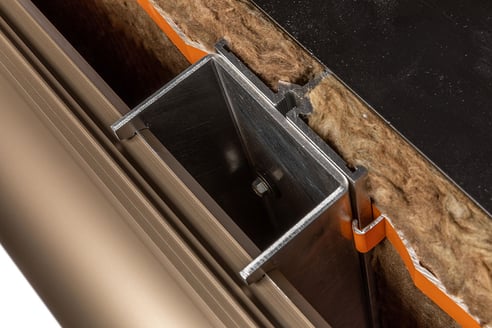The U-value shows the total thermal resistance of the layers that make up a particular element of a building.

In a nutshell:
- The U-value shows how effective a wall, window or roof is at preventing heat being lost - or stopping cold getting in
- The maximum allowable U-value is covered by strict building regulations
- The important layer in a rainscreen cladding system is the insulation
- Rainscreen cladding panels contribute very little to the U-value
- Some brackets can increase the U-value – special insulated brackets are available
In other words, how effective is a wall or roof at preventing heat being lost from a building, or stopping cold getting in?
It’s a complex calculation, measured in watts per metre. But what you really need to know is that the lower the U-value the better. For example, windows might have a U-value of 1.8, while a fully insulated wall could be down at 0.15.
Either way, it’s extremely important to calculate the U-value because it’s covered by strict building regulations (maximum 0.35 for walls).
So, what about rainscreen cladding? As you’ll read elsewhere in our Knowledge Centre, a rainscreen cladding system (as distinct from rainscreen cladding panels) is made up of different layers and elements.
However, when it comes to thermal performance, only one part really matters... the insulation layer.
The cladding itself (whether metal, wood or terracotta) will contribute very little to the overall U-value, while elements such as the ventilated cavity and the backing wall will only help a bit.
It’s also important to remember that rainscreen cladding systems are ventilated – they’re neither airtight nor watertight. Plus, there are elements of a rainscreen cladding system that may actually increase the U-value.
Brackets, for example, are prime culprits for transferring cold from the outside in, and vice versa. It’s called thermal bridging, but can be reduced by special insulated brackets.
Software is available to carry out the calculations yourself. Most people, however, put compliance with building regulations in the hands of rainscreen cladding specialists.
Submit new questions
Would you like to see your questions answered? Submit them to us and we'll let you know when we've found the answer.
